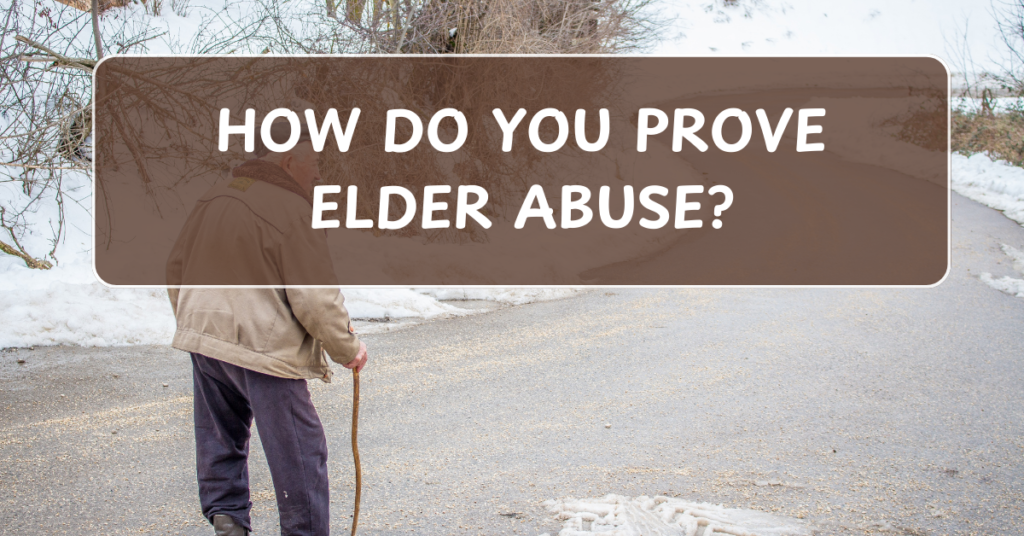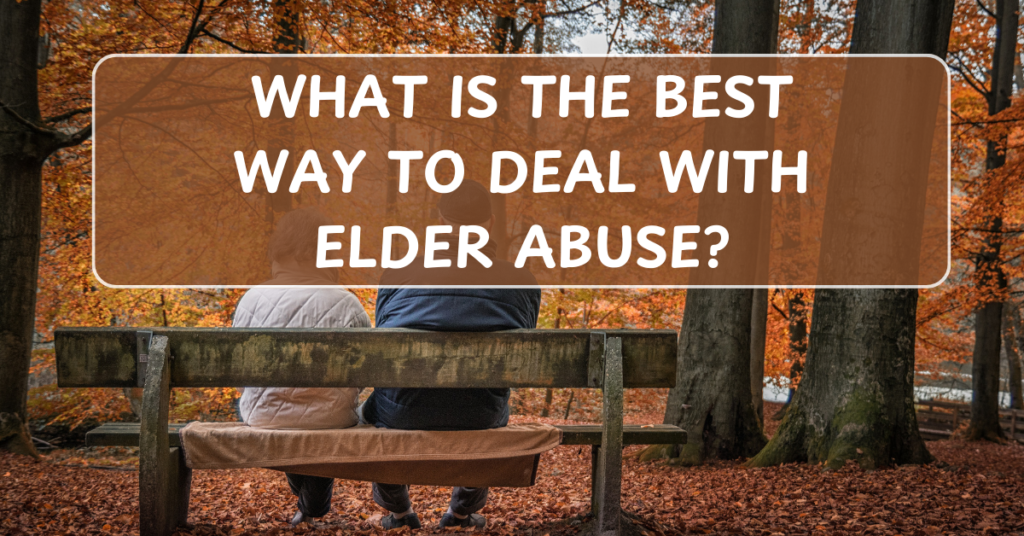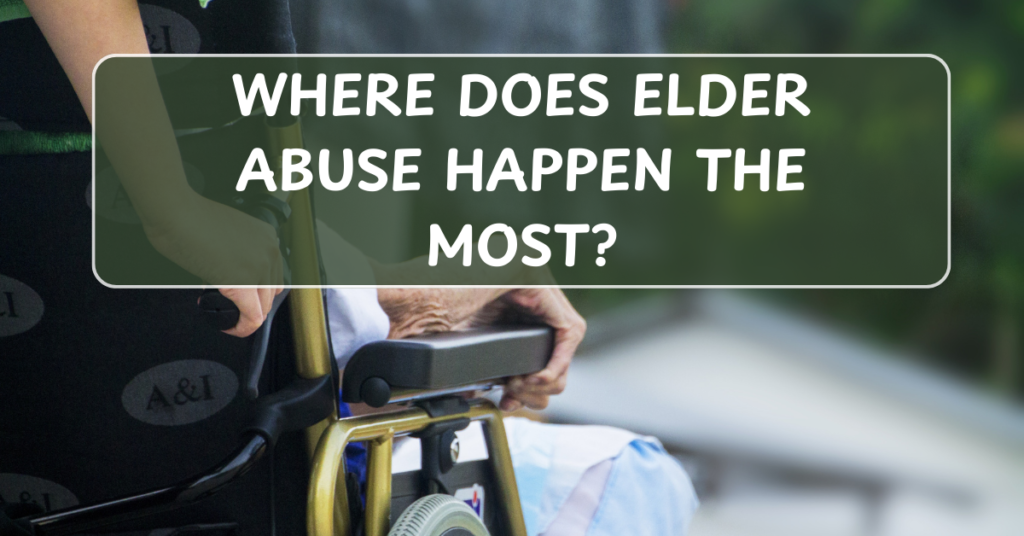
Proving elder abuse can be challenging, but it is essential for protecting the elder and ensuring justice is served. Elder abuse can be physical, emotional, financial, or neglectful, and each type requires different approaches to gather evidence. Below are steps to help prove elder abuse:
1. Document the Signs of Abuse
One of the most important steps in proving elder abuse is thorough documentation. This includes taking notes on any physical signs, emotional symptoms, or behavioral changes that suggest abuse or neglect.
What to Document:
- Physical Signs: Document any visible injuries (bruises, cuts, burns, fractures) and note their appearance, location, and the circumstances in which they occurred.
- Medical Records: If the elder has been to the hospital or seen a doctor for injuries, request medical records and doctor’s notes. These can show patterns of abuse and rule out other causes.
- Behavioral Changes: Record any sudden or unusual changes in the elder’s behavior, such as withdrawal, depression, anxiety, or confusion, which may indicate emotional or psychological abuse.
- Financial Transactions: If financial abuse is suspected, keep track of any unusual financial transactions, such as large withdrawals, unexplained purchases, or missing money/assets.
- Caregiver Actions: Document any concerning actions or behaviors of caregivers, family members, or facility staff, such as refusing medical treatment or limiting access to visitors.
2. Gather Statements and Testimonies
Eyewitness testimony can be crucial in proving elder abuse. Speak with people who may have witnessed or heard about the abuse, including neighbors, friends, healthcare professionals, or fellow residents in a care facility.
Who Can Help:
- Neighbors and Friends: Neighbors or friends who have observed strange behavior or signs of injury may be able to provide valuable statements.
- Healthcare Professionals: Doctors, nurses, and other medical personnel who have treated the elder can provide statements regarding any injuries, neglect, or signs of abuse.
- Care Facility Staff: If the abuse took place in a nursing home or care facility, other staff members or residents may have witnessed the abuse or can testify to neglectful behavior.
3. Obtain Photographic Evidence
Photographs can be a powerful tool in proving physical abuse or neglect. Photographic evidence can help establish patterns and document injuries.
What to Photograph:
- Injuries: Take clear photographs of any visible injuries or wounds the elder may have sustained (bruises, cuts, etc.), making sure to capture different angles and close-ups.
- Living Conditions: If the elder is living in unsanitary or unsafe conditions (e.g., dirty living spaces, lack of food or water, inadequate clothing), photograph these conditions to show neglect.
- Damaged Property or Financial Documents: In cases of financial abuse, photographing financial records, such as bank statements or missing checks, can help prove the exploitation.
4. Medical and Psychological Evaluations
If you suspect elder abuse, medical and psychological evaluations can provide crucial evidence. These evaluations can help establish the extent of the abuse, whether physical or emotional, and provide a professional opinion on how the abuse has impacted the elder.
What to Look For:
- Physical Examinations: A doctor can examine the elder for injuries, neglect, or signs of medication overuse or underuse.
- Psychological Evaluations: A psychologist or psychiatrist can assess emotional or psychological abuse, such as signs of depression, anxiety, or PTSD.
- Forensic Evidence: In cases of sexual abuse, forensic exams can help gather evidence to support the claim.
5. Report the Abuse to Authorities
Once you have gathered evidence, report the abuse to the appropriate authorities, such as Adult Protective Services (APS), local law enforcement, or the long-term care ombudsman. They will investigate the situation, often using their resources to collect additional evidence and corroborate the claims.
What Authorities Do:
- Investigations: APS or law enforcement will conduct interviews, examine the elder’s condition, and assess the environment to determine whether abuse or neglect has occurred.
- Interviews: Authorities may interview the elder (if they are capable of communicating) and any potential witnesses to corroborate the evidence.
- Collaboration with Medical Professionals: Authorities may consult medical professionals who have treated the elder to validate the findings and confirm the abuse.
6. Work with Legal Professionals
A lawyer with experience in elder abuse cases can help guide you through the legal process, help gather more evidence, and ensure that the proper steps are taken to protect the elder’s rights.
What Legal Professionals Do:
- Legal Guidance: A lawyer can help you understand the legal implications of the evidence and how to build a strong case for the elder.
- Court Documentation: If necessary, a lawyer can help file legal claims, including seeking restraining orders or filing lawsuits for damages related to the abuse.
- Protecting the Elder’s Rights: Lawyers can help ensure that the elder’s safety is prioritized and that any abusers are held accountable.
7. Involve Social Services
Social services can offer additional support by connecting the elder to care options and services that can help stop the abuse. In cases of neglect, social services may work with family members or facilities to address the elder’s needs.
What Social Services Do:
- Case Management: Social workers can coordinate services for the elder, such as healthcare, housing, and legal assistance, to ensure they are safe.
- Ongoing Monitoring: Social services can help monitor the situation and ensure that the elder is not subjected to further abuse.
Conclusion
Proving elder abuse requires a comprehensive approach that combines careful documentation, medical evaluations, eyewitness testimonies, and the involvement of authorities. If you suspect elder abuse, it’s essential to act quickly and gather as much evidence as possible to ensure the elder’s safety and hold the abuser accountable. Always consult with professionals, including healthcare providers, legal experts, and social services, to help build a strong case.


